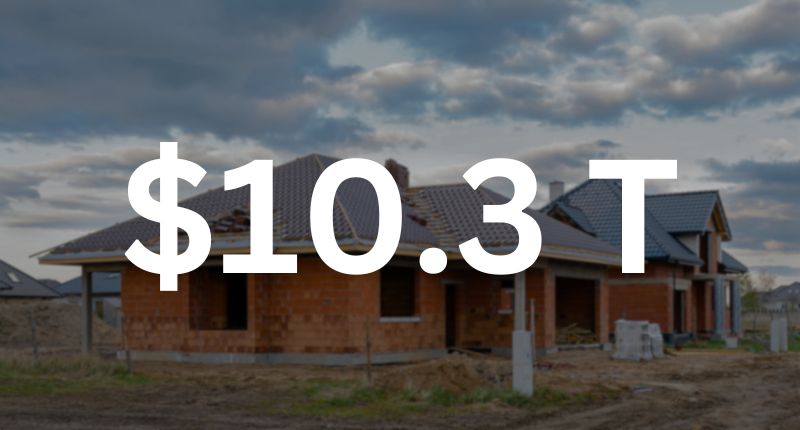- Residential real estate was valued at $10.3 trillion in December 2023.
- In the three months to December, Australia recorded a 1.5% increase in dwelling values.
- Dwelling approvals picked up in November at 1.6% but are still low.
Australia’s property market has recorded another rise in home values, with the nation’s residential real estate value now worth $10.3 trillion, according to CoreLogic‘s January Monthly Housing Chart Park.
This shows a steady continuation of the housing industry’s recovery, up from the $10.2 trillion valuation recorded at the end of October 2023.
Total value of dwelling stock, Australia

Nationally, home values rose one 1.5% in the three months up to December, which was slightly down from the rise recorded in the June quarter.
Sales volume declines
In 2023, there were 488,898 sales recorded, according to CoreLogic. This is 2.2% lower than in 2022.
The combined capitals did not record a change from last year, however, Perth, Hobart, and Sydney were the ones to note an increase at 4,1%, 2.1% and 3.3%, respectively.
The combined regionals saw a modest fall, however, at -7.6%. All the regional areas recorded a drop off but regional Northern Territory recorded by far the biggest one at -16.3%.
Change in capital city home values
Across the combined capitals in the three months leading up to December 2023, the report noted a 1.5% increase, with Perth leading the pack at 5.1%. Adelaide and Brisbane closely trailed neck and neck at 3.7%. Melbourne was the one capital to note a decline at -0.2%.
It has been observed that, throughout 2023, Melbourne’s property prices were relatively sluggish.
Days on market in capital cities and regional areas
According to CoreLogic, the time it would take to sell a capital city home was lower in 2023, however, it was slightly higher in the December quarter.
Across the nation, the median amount of days on the market for a capital city was 30 days and 31 for regional areas.
In the regional areas, the median selling time for dwellings was purported to be 41 days, which is an increase from 36 days in 2022. This is still well below the pre-Covid average.
In line with its heft property growth, Perth’s properties by far had the shortest amount of days to sit on market, at 11 days compared to 19 in 2022. Next was Brisbane at 21 days compared to 27 in 2022.
Darwin by far had the longest days on market at 55, compared to 54 days in 2022.
Median days on market

Australia’s rent values increases
In December, Australia’s rent value increased 0.6%, which took the country’s annual increase to 8.3%.
The combined capitals saw a 9.8% increase.
Once again Perth scored big here, recording a whopping 13.4% in rent values. Melbourne snagged 11.1% and Hobart and Canberra demonstrated diminishing values at -3.5% and -1.9%, respectively.
The combined regionals recorded a 4.3% increase, with regional Western Australia recording the biggest increase at 11%. Regional South Australia recorded a 7.5% rise.
Regional Northern Territory and Regional Tasmania recorded the lowest rent values at -0.9% and -1.7%, respectively.
Dwelling approvals picked up but are still low
In November, dwelling approvals increased 1.6%.
Overall, approvals trended higher throughout the year but remained low.
In the past six months, monthly dwelling approvals averaged 13,760 a month, which is well below the decade average of 17,254.
In light of the ambitious housing accord targets set last year, experts have voiced their concerns and doubts that these targets will be met.
Monthly house v unit approvals, national









